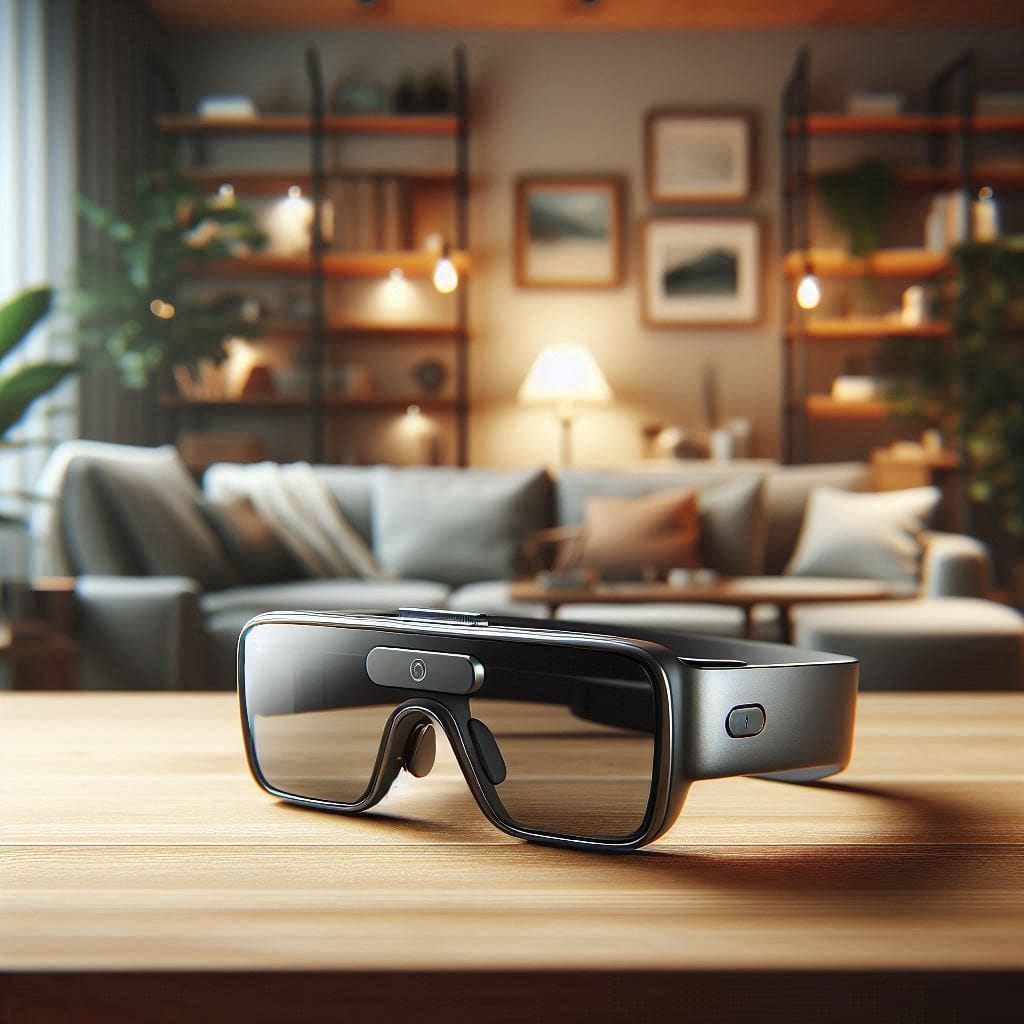
Smart glasses with audio are here. Discover if these revolutionary wearables will truly replace your earbuds for music, calls, and daily life. Explore the pros, cons, and future of audio eyewear.
Smart Glasses with Audio: Will They Replace Earbuds?

For years, earbuds have been the undisputed champions of portable audio, offering convenience, immersion, and discreet listening. However, a new contender is emerging: smart glasses with integrated audio. These innovative wearables blend eyewear with sound, raising a compelling question: could they eventually replace our beloved earbuds?
While smart glasses with audio are still in their early stages, they offer a unique set of advantages and disadvantages that will determine their place in our audio landscape.
What Are Smart Glasses with Audio?

Smart glasses with audio are essentially eyeglasses or sunglasses with built-in speakers and microphones, allowing you to listen to music, take calls, and interact with voice assistants without needing separate earbuds. They connect to your smartphone or other devices via Bluetooth.
The audio delivery typically happens in one of two ways:
- Directional Speakers: Small speakers are discreetly built into the temples (arms) of the glasses, directing sound towards your ears. This open-ear design allows you to hear your audio while remaining aware of your surroundings.
- Bone Conduction: Less common but also used, this technology transmits sound vibrations directly to your ear bones (cochlea), bypassing the eardrum. This also leaves your ears open.
Examples include Ray-Ban Meta Smart Glasses, Amazon Echo Frames, and various models from brands like Bose (though some have been discontinued).
Advantages of Smart Glasses Over Earbuds
Smart glasses offer several compelling benefits that earbuds can’t match:
- Situational Awareness: This is the biggest differentiator. The open-ear design means your ear canals are not blocked, allowing you to hear ambient sounds like traffic, announcements, or conversations. This is a significant safety advantage for outdoor activities like running or cycling, and for maintaining awareness in public spaces.
- Comfort for Extended Wear: For many, earbuds can cause ear fatigue or discomfort after prolonged use. Smart glasses sit on your face like regular glasses, avoiding direct insertion into the ear canal, which can be more comfortable for all-day wear.
- Seamless Integration with Daily Life: If you already wear glasses, smart glasses offer a two-in-one solution, integrating audio discreetly into an item you already use. This reduces the number of devices you need to carry and manage.
- Hands-Free Interaction: With built-in microphones and voice assistant integration, smart glasses enable truly hands-free control for calls, music playback, and accessing information, often without needing to touch your phone.
- Enhanced Communication: Some advanced models are even designed to subtly amplify voices of people you’re facing, or provide real-time captions for those with hearing impairments, enhancing social interaction.
- Style and Discretion: Many smart glasses are designed to look like fashionable eyewear, making them less conspicuous than visible earbuds.
Limitations of Smart Glasses Compared to Earbuds

Despite their advantages, smart glasses face significant hurdles in fully replacing earbuds:
- Audio Quality (Generally): Due to their open-ear design and the physics of sound projection, smart glasses typically cannot match the immersive sound quality, deep bass, or effective noise isolation of earbuds that create a seal in your ear canal. For audiophiles or those who crave rich, private audio, earbuds still reign supreme.
- Sound Leakage: While manufacturers are improving directional audio, some sound leakage is inevitable, meaning people around you might hear your audio, especially at higher volumes. This compromises privacy in quiet environments.
- Battery Life: Integrating all the technology into a slim glasses frame often means smaller batteries. While improving, their battery life might not yet match the extended playback offered by many earbuds (especially when factoring in charging cases).
- Fit and Personalization: While comfortable for some, glasses are a “one-size-fits-most” solution. Earbuds, with their various tips and wing sizes, often offer a more personalized and secure fit for different ear anatomies, which is crucial for active use.
- Dependence on Eyewear: If you don’t typically wear glasses, or if you prefer contacts, smart glasses might feel like an unnecessary accessory.
- Cost: Smart glasses are generally more expensive than many high-quality earbuds, making them a larger investment.
- Limited Advanced Features: While some offer cameras or AI integration, the full suite of biometric and cognitive tracking features found in advanced “smart” earbuds is less common in smart glasses due to space and power constraints.
Will They Replace Earbuds? The Future Outlook

It’s unlikely that smart glasses will completely replace earbuds in the near future, but they will certainly carve out their own significant niche.
- Complementary, Not Replacement (for now): For the foreseeable future, smart glasses and earbuds will likely coexist as complementary devices. Earbuds will remain the go-to for private, immersive, high-fidelity audio, and for intense workouts where a secure, sweat-resistant, in-ear fit is paramount.
- Ideal for Specific Use Cases: Smart glasses are poised to excel in scenarios where situational awareness, hands-free convenience, and discreet integration are prioritized – think casual listening, calls on the go, navigating while walking, or light outdoor activities.
- Technological Advancements: The technology is rapidly evolving. Companies like Meta are heavily investing in audio research labs to improve spatial audio and reduce sound leakage in smart glasses. As AI integration, display technology, and battery efficiency improve, smart glasses will become increasingly capable. We might see more advanced health tracking, augmented reality overlays, and more seamless integration with digital assistants.
In conclusion, smart glasses with audio are a fascinating development, offering a glimpse into a more integrated future of wearable tech. While they won’t render earbuds obsolete overnight, they present a compelling alternative for those who prioritize ambient awareness and seamless interaction over absolute audio fidelity and deep immersion. The choice will ultimately depend on individual priorities and lifestyle.
Further Reading

- The Real Reason Athletes Avoid Over-Ear Headphones at the Gym: Understand why specific form factors matter for fitness: /the-real-reason-athletes-avoid-over-ear-headphones-at-the-gym/.
- Most Fitness Enthusiasts Overlook This Headphone Feature — You Shouldn’t: Learn about the importance of Transparency Mode: /most-fitness-enthusiasts-overlook-this-headphone-feature-you-shouldn-t/.
- Future of Headphones: Biometrics & AI: Explore broader trends in headphone technology: https://gearforaudio.com/future-of-headphones-biometrics-ai/.
- Complete Guide to Choosing Bluetooth Earbuds: For a comprehensive guide to selecting traditional earbuds: https://gearforaudio.com/complete-guide-to-choosing-bluetooth-earbuds/.
- Smart Glasses Can Upgrade Your Vision, Help You Hear Better, Too: An external article discussing the broader benefits of smart glasses: https://www.aarp.org/personal-technology/smart-glasses-improvements/ (External Link: AARP).
FAQ – Smart Glasses vs. Earbuds: The Future of Wearable Audio?
1. Can smart glasses replace earbuds for audio?
Yes, audio smart glasses (like Ray-Ban Meta or Echo Frames) offer hands-free, open-ear listening, making them ideal for calls, podcasts, and casual music. However, earbuds still dominate for sound quality, noise isolation, and bass-heavy audio.
2. What are the benefits of smart glasses with audio?
✅ Situational awareness – Hear surroundings clearly (safer for running/commuting)
✅ Discreet audio wearables – No visible earbuds, more professional in meetings
✅ All-day wear – Comfortable compared to in-ear pressure
✅ Multitasking-friendly – Take calls without touching your phone
3. What are the drawbacks of smart glasses audio?
❌ Weaker bass & sound leakage – Open-ear design lacks deep tones
❌ Limited volume – Not ideal for noisy environments
❌ Battery life – Typically 4-6 hours (vs. 8+ hours for premium earbuds)
❌ Price – Often more expensive than high-end earbuds
4. How do bone conduction glasses compare to traditional smart glasses?
Bone conduction (like Shokz or Razer Audioshades) vibrates sound through cheekbones—better for workouts but can feel buzzy.
Speaker-based smart glasses (Ray-Ban Meta, Echo Frames) use tiny directional speakers—more natural but can leak sound.
5. Are Ray-Ban Meta Smart Glasses good for music?
They’re decent for casual listening, but audiophiles will prefer earbuds. The open-ear design means:
✔ Good for podcasts/audiobooks
✖ Weak bass for EDM/hip-hop
✖ Sound leaks in quiet spaces
6. How do Amazon Echo Frames compare to earbuds?
Better for Alexa users (seamless voice control)
Worse for music (tinny sound vs. AirPods/Sony earbuds)
Great for notifications & calls
7. Will smart glasses replace earbuds in the future?
Not entirely—but they’ll coexist for different uses:
Earbuds = Best sound, noise cancellation, privacy
Smart glasses = Convenience, situational awareness, all-day wear
8. Which has better sound quality: earbuds or smart glasses?
Earbuds win—especially for:
🎵 Bass-heavy music
🔇 Noisy environments (ANC helps)
🎧 Private listening
9. Are smart glasses safer for running/cycling?
Yes! Open-ear audio glasses (or bone conduction) let you hear:
🚗 Traffic
🚦 Warning signals
🗣️ People talking to you
10. What’s the most discreet wearable audio option?
Smart glasses (look like regular eyewear)
Ultra-small earbuds (like Samsung Galaxy Buds 2)
Hearing aid-style wearables (like Bose SoundControl)
11. Can I use smart glasses for phone calls?
Yes! Models like Ray-Ban Meta and Echo Frames have:
📞 Clear mics (beamforming tech helps reduce background noise)
🎙️ Touch controls for answering/ending calls
12. Do smart glasses work with noise cancellation?
No—their open-ear design means no ANC. If you need silence, stick with AirPods Pro 2 or Sony WH-1000XM5.
Final Verdict:
For music & immersive sound → Earbuds
For safety & multitasking → Smart Glasses
For workouts → Bone Conduction (or Shokz)
Which would you choose? 😎🎧


